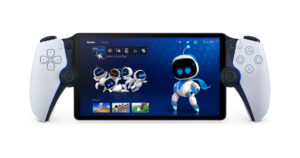Sony's streaming accessory turns your PS5 into a Wii-U.
PlayStation Portal review: This remixed PSP thrives within its limits
The first and most important thing that should be said about the PlayStation Portal is that it isn't like other gaming handhelds. It's not running games locally like a Steam Deck or Nintendo Switch. Instead, the hardware here is built to beam them over your Wi-Fi network from your PlayStation 5.
That fundamental difference brings a ton of caveats and limitations, chief of which is the reality that you're only ever going to be able to play PlayStation games on this thing. That said, the narrower scope here makes it much easier for Sony to deliver the experience it promises with the Portal.
This thing isn't likely to replace your Switch when it comes to gaming outside your home, but if you've got the gear to go with it then it's got a pretty good shot of becoming your portable of choice within it.
How much does the PlayStation Portal cost in Australia?
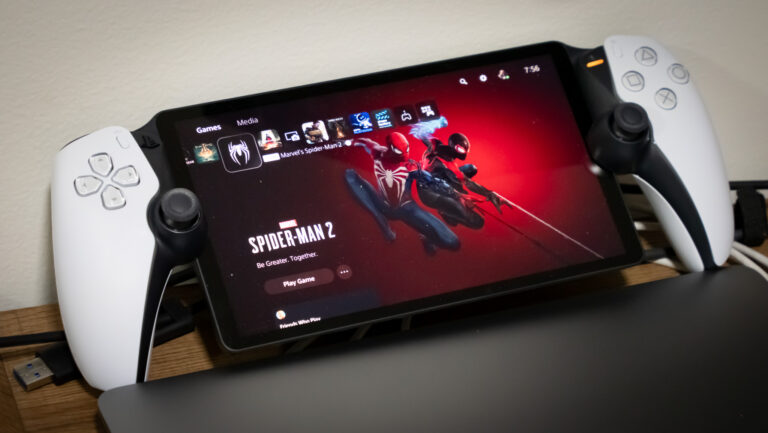
The price tag for the PlayStation Portal starts at $329.95 in Australia.
That's about the same as what you can expect to pay for a Nintendo Switch Lite, though it is slightly cheaper than Sony's own DualSense Edge controller. The latter might be a more appropriate point of comparison here, given that the Portal is in several practical respects just a big controller with a screen attached to it.
For a sense of how much the PlayStation Portal costs from various retailers, check out the table below.
PlayStation Portal : Design and features
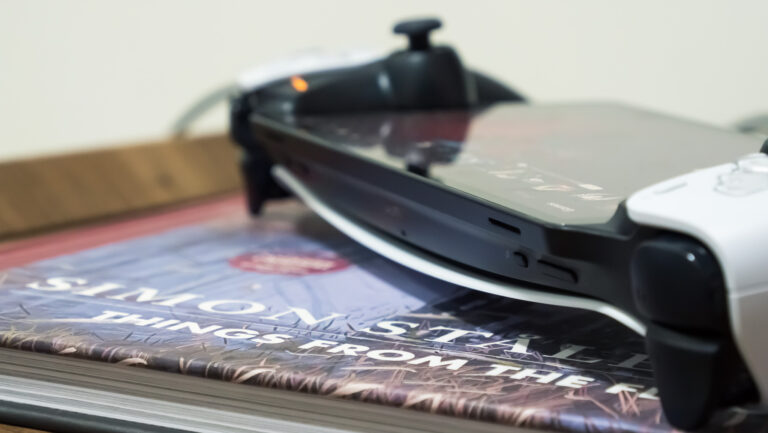
If your first thought on seeing the PlayStation Portal is that looks like a DualShock 5 swallowed a 1080p screen that's probably because that's that's more-or-less what it is. Wedged between the two halves of the handheld, the main event here is a touch-sensitive LCD tablet that's 8 inches in size. The bezels here are thinner than the ones seen on the likes of the Nintendo Switch but still somewhat chunky by the standards of modern mainstream Android tablets.
It's a similar story when it comes to the weight of the PlayStation Portal. At 529g, it's heavier than a standard DualShock controller but lighter than either the Steam Deck or ROG Ally. The weight is also distributed more evenly and that difference is something that you can feel over longer play sessions.
In any case, the PlayStation Portal's greatest asset is arguably the design language it inherits from its screen-less counterpart. More than just looking like a natural sibling to the controller for the PlayStation 5, Sony's streaming handheld can emulate and echo a lot of what makes that particular controller comfortable to use daily. Having to use the Portal's touch-sensitive display as a giant touchpad is a bit clunky, but otherwise, there's a lot to like here.
Less obvious details here include a set of power and volume buttons on the top-most edge and a USB-C port that's used for charging that sits next to a headphone jack on the underside of the reverse half.
Of course, the most significant design decision to unpack here is the fact that the Portal is less of a dedicated gaming handheld and more of a controller with a screen and streaming capabilities. To play anything on it, you'll need a PS5. If you don't own one already or aren't to buy one, there's no reason to even consider buying this.
Assuming you're over that hump, the next thing you'll want to keep in mind is that you're going to get the best results if both your home console and the Portal are on the same Wi-Fi network.
Nothing is stopping you from accessing your console remotely using the Portal if you're out of the house. However, the results of attempting this are going to vary pretty widely depending on where you are and what kind of internet connection you have. According to Sony, the experience should be functional with an internet connection of as slow as 5Mbps. However, the company recommends closer to 15Mbps for a good one.
Even in an ideal connectivity situation though, the fact that you are relying on a wireless network when it comes to using the Portal does add a sprinkle of unpredictability and variability to the experience it offers.
I have a pretty powerful gaming router at home. You might not. Even if you do though, WiFi can be a fickle thing. Whenever I turned on my microwave, it would interfere with my WiFi network to the point that the Portal became unusable.
Most of the time, it just works though. As a product, the PlayStation Portal is almost aggressively straightforward. That said, there are a few devils in the details worth unpacking. For instance, the PlayStation Portal only supports a single set of Sony earbuds.
In a world where wireless headphones are as ubiquitous as they are, this feels like a categorically absurd shortcoming. Even if the speakers here are good enough to serve and you can always make use of a 3.5mm headphone jack as a fallback, the fact that Sony has gone so far as to lock down the Bluetooth connectivity on this thing stinks.
Another catch that some might get caught up on here is the reality that (since it works the same way as the PS5's existing Remote Play functionality does) nobody can play your console while the Portal is being used. In other words, it's great if you want to play something while catching up on whatever Netflix original you're in the middle of but not so good if you're sharing that console with someone.
On a related note, it should be said that your mileage with the Portal may also vary based on how much of your gaming collection is digital rather than physical. Having to run over to your console to swap discs to play something on a handheld is rarely ideal and always clunky.
What's more, these shortcomings only serve to make the omission of support for cloud gaming on the Portal seem even more odd. Sony's support for Aussies on this particular front has always been a bit sketchy but having an alternative way of using the hardware here would go a long way towards making the Portal less contingent on you having a PS5 on hand.
PlayStation Portal: Performance
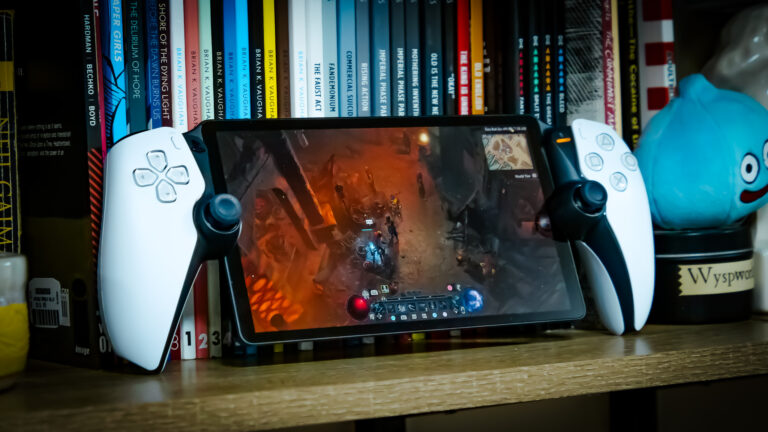
For all those limitations though, the fact that PlayStation Portal is such a simple device works wonders in its favor. It does one thing and it does that thing extremely well.
My experience saw the handheld last around six or seven hours on a single charge. What's more, the fact that you don't have to fuss around with any accessories like the Razer Kishi or deal with the incoming notifications that come with using a mobile device to stream games from your PS5 goes a long way to making the Portal feel like a product that pins down and eliminates all the usual pain points that come with Remote Play.
I've already sunk half a dozen hours into playing Diablo 4 on the PlayStation Portal and the experience is easily better than the one offered by playing it natively on something like the Lenovo Legion Go. The battery life is better, there's no build-up of heat and the latency is almost non-existent regardless of where in my apartment I'm looking to play.
If you're playing a game that's a bit of a time-sink, the Portal is a solid way to pass the hours. There was the odd moment where the stream quality did degrade in a way that my eyes could spot, but even then that slippage never lasted for more than a few moments and the latency remained low enough that it never felt like the Portal was lagging out or otherwise unresponsive.
When it came to other games like Elden Ring or Horizon: Forbidden West, the results were similarly impressive. However, as opposed to Diablo 4's top-down perspective, the sweeping environs of the Forbidden Lands proved more technically challenging for the PS5 and this was reflected in the quality of the Portal's video stream. Simply put, if a game is demanding enough it runs at a lower frame rate, you're more likely to notice things like visual artifacts and compressions when it comes to playing it on the Portal.
Even with those caveats though, I'd rate the experience here as not only better than the one offered by many gaming handhelds but one that offers much more bang for buck. The fact that Portal is so much cheaper than a dedicated gaming handheld PC like the Steam Deck or Ayaneo Air does wonders for its value proposition.
Even if you're only able to play PlayStation 4 and PlayStation 5 games and especially if you are mostly going to be playing within the boundaries of your home, the hardware powering the Portal is super slick and the price tag is far easier to swallow than the sums that the likes of ASUS, MSI and Lenovo are asking for.
PlayStation Portal: Is it worth the money?
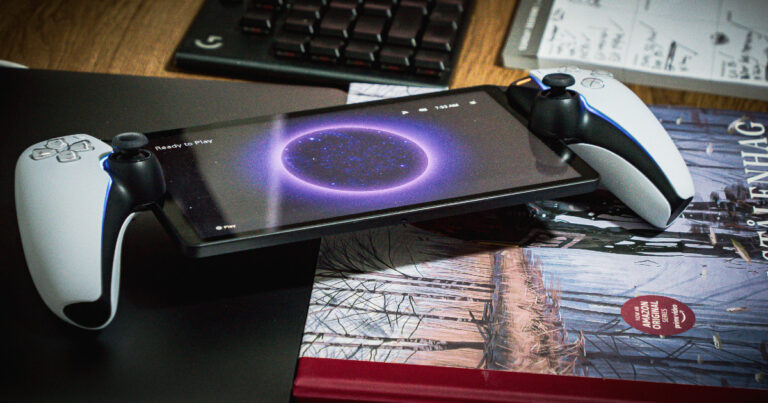
Don't get me wrong, there are plenty of smaller problems with the PlayStation Portal. There are hard limits, more than a few frustrating design choices and plenty of room for improvement in future models. Despite that though, the sheer lack of friction in the specific experience that Sony's streaming handheld offers makes those drawbacks easy to forgive and forget about.
The PlayStation Portal probably isn't going to change the gaming handheld landscape in the way that the Nintendo Switch or Steam Deck have. However, it thrives within the narrow confines of its more versatile vision of what gaming on PlayStation can look like.
I don't know if I'd go so far as to say it can replace my Switch, but I wouldn't hesitate to call the PlayStation Portal a must-have accessory for anyone who already has a PlayStation 5.
Related Articles




